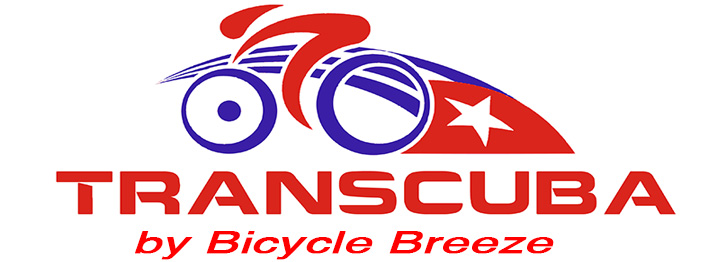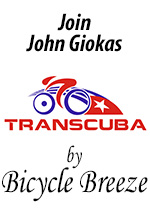July 17/03 10:41 am - Shimano Saint Preview from Whistler BC
Posted by Editoress on 07/17/03
Shimano Saint Group
Canadian Cyclist was fortunate to be invited to the world premiere of Shimano's new "Saint" freeride/downhill group here at Whistler. Not only did we get a chance to talk to all of the tech folks from Shimano, but we got to play on bikes equipped with Saint all afternoon on Whistler's famous free ride park.
This is a very niche group for Shimano, and something that they really haven't done before. Rather than a group that was designed in head office, the Saint is collaborative effort between head office, Shimano USA and Shimano Canada. Much of the design work and just about all of the testing was accomplished by Shimano Canada and a host of famous west coast riders, such as Richie Schley, Thomas Vanderham, Andrew Shandro, Wade Simmons, Brian Lopes and Hans "No Way" Rey, and the Rocky Mountain Fro riders. Lots of input. Lots of testing. Lots of fun.
The Saint group will not be available on OEM bikes in Canada until January and individual components should be available for all you good little mountain bikers just before Christmas. Absolutely no word on pricing, except that it will be somewhere between XT and XTR, likely closer to XTR. That makes sense, because there is some exchange of technology between the two groups.
The name Saint comes from historical references to religious saints. Many saints were considered radicals, but eventually they were accepted by one and all. Yeah. Okay, I guess. Blame marketing.
Crank - There's lots of tricks borrowed from the XTR here. As in the XTR version, the axle and the drive side of the crank are all one piece, known in Shimano speak as Hollowtech II. The outer diameter of the axle is the same as XTR, but the inner diameter and the butting are more substantial. The crank arms are much, much wider in profile than the XTR for increased strength. The crank is available as either a single ring, a triple ring or a double ring with a built in Lexan bash guard. Arm lengths available are 165, 170, 175 and 180mm. The triple comes with 44/32/22 rings and the double with 32/22. On the single there are 34, 38, 42 or 46 rings available. Crank 2
Much attention has been paid to the hole for the pedal. A steel insert is pressed into the aluminum arm. This insert is recessed on the pedal side, much like a chain ring bolt, and a large washer/spacer is used between the arm and the pedal. It will provide a much more secure attachment between the two, since there aren't any weak aluminum threads to deal with.
Rear Hub - It's a thru-axle and it's not. You can still use this hub with standard drop outs on your bike. There is a 20mm hollow axle used in the hub itself. Then a 10mm skewer slides through the hub and screws into the derailleur. So its sort of a thru-axle and sort of not. The hub spacing is still 135mm even with 9 speeds and conventional drop outs on the frame can still be used.
There are standard bearings and cones in the hub itself and two precision bearings in the free hub body. The cones are the same front and rear and they are replaceable. The idea is that the cones are compressible so that there won't be any play in the back end. There are also three pawls in the free hub body for faster actuation. At the current time the skewer is hollow, with only about half of the material drilled out, but this is not finalized. The front hub comes with a 20mm thru-axle.
For both the front and rear hubs, the brake rotors are attached using the same type of lock ring used on the new XTR.
Derailleur - It's Rapid Rise. Shimano calls it Low-Normal, but it's Rapid Rise. If you want to use the whole group you're going to use Rapid Rise because its the only way the derailleur comes. You can get them in long, medium or short cage lengths.
The trickest thing is that you don't need to have a derailleur hanger on your bike. The axle threads into the back of the derailleur holding it all in place. It has a lot of material at this important spot. There is also a small set screw just in front of the axle that acts as stop bumper for the forward motion of the derailleur. This prevents the derailleur from smacking into the bottom of the chainstay in the rough going. It works, the bike is a lot quieter with the Saint derailleur on board. There is a lot of aluminum, but critical locations like the cable fixing bolt are in steel. The fixing bolt has also been moved to the upper inside of the derailleur to keep it out of harms way. The cable tension adjuster has also been removed because it is fragile. The under side of the derailleur is greatly reinforced and can actually act as skid plate. It has even been smoothed so that it will slide over rocks much easier.
Brakes - Hydraulic of course. They look very similar to XTR, but there is more material. Think XTR on steroids. There are only two pistons powering the pads. Here's the reasoning. With a four piston design like XT, the caliper is built in two pieces and held together with bolts. The design can lead to flex under extreme conditions. With the one piece forging, the entire caliper is much stiffer and more durable. The rotors are available in both 6 and 8 inch diameters.
Impressions - Overall, I'd have to say that it works quite well. Like the XTR crank the Saint crank delivers an incredible amount of stiffness for jumping and just about anything else you can think of. I think that they are going to appear on a lot of bikes destined for abuse.
The hubs are quite good. They spin very well, and despite their large size they are actually fairly light. It is also nice that they can be completely disassembled and cleaned. You'll need a couple of larger than normal cone wrenches and a new tool to remove the rotor, but hey, servicing your own kit is a big bonus.
The derailleur works very well, and really you forget that it is back there. It is clearly built to be bashed and it shifted just fine. The only issue I have is that you need to use XTR Dual Control shifters with this thing if you want to get all of the benefits. You can use other Shimano shifters, but they are going to work in reverse thanks to Rapid Rise. It is being imposed upon you whether you want to or not if you want to ride the Saint Group.
I didn't like to do this type of riding with the XTR levers. I'd like a longer lever (3-4 finger) than the 2 finger that they come with. I did runs on different bikes with both the 6 and 8 inch rotors. With the 6 inch rotors you needed to grab a lot of brake lever and it just wasn't there. I appreciated the power of the 8 inch rotors much more.
A couple of hours of riding still isn't enough to offer a complete impression of the Saint group. It should also be mentioned that some of the components were still working prototypes. Canadian Cyclist will get hold of a Saint group as soon as they are available and give you our impressions after long term testing. So far though, based on what both of us editors think, it is a well made and extremely well thought out product. I will guess that it is going to receive a lot of market acceptance. It also marks a very different approach from a company that has often been overly conservative. The folks from Shimano Canada reported that it took a lot of convincing on their part to get head office to agree to this project. If it is successful we expect that more Shimano "Skunk Works" projects may see the light of day. So far bike manufacturers that are using the Saint are GT, Rocky Mountain, Norco, Balfa, Brodie, De Vinci, Haro, Kona, Santa Cruz and Titus.
From an aesthetic point of view, the components are very pretty. They are all a charcoal grey/black finish, which goes with just about everything. The test bikes we had were all done up in black and we were supplied with black Saint jerseys to complete the entire black theme on a really hot and sunny day. We stood out from the crowd and rider after rider in the lift line just drooled over the Saint.
Once again thanks to Shimano and Whistler for treating us to this premiere.
Check out www.ridesaint.com for more info (the site went live yesterday).
| Return to Canadian Cyclist homepage | Back to Top |





